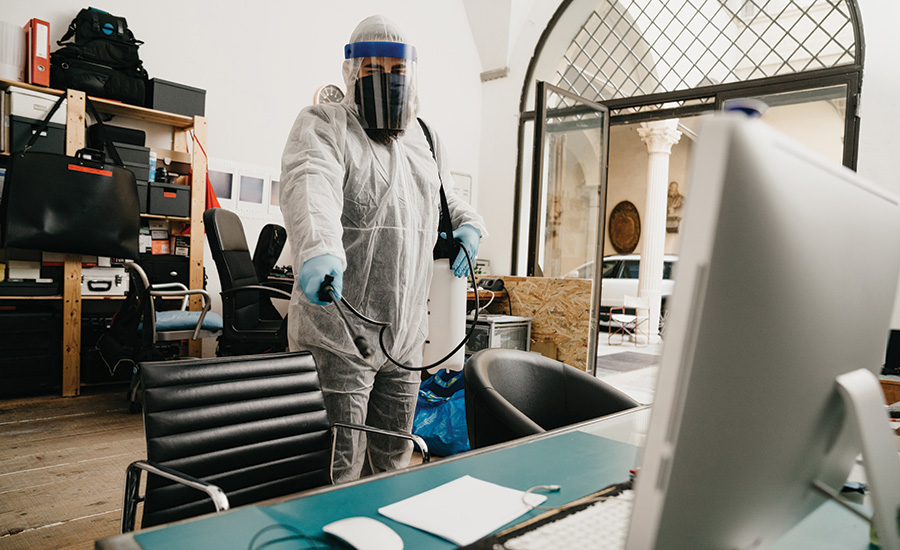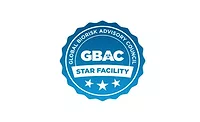The Restoration Industry in the COVID-19 Environment

2020 sure has been a unique year! The third decade of the 21st century started like most other years and…well, let’s just say everyone now has a new vocabulary most likely consisting of words and phrases such as social distancing, quarantine, flatten the curve, and Dr. Fauci.
This is the tenth year I’ve been involved in making investments in the restoration space and COVID-19 has presented numerous challenges (and opportunities!) to companies in our industry. I’ve seen restoration companies face challenges in previous years and the successful companies always come out of any challenging period stronger and better off. Companies with a renewed focus on culture, mission, and data-driven decision-making have been able to navigate the pandemic with more certainty and are poised to emerge stronger than before.
Our Industry Was Scared at the Beginning
Let’s face it: business owners, executives, and employees in the restoration industry were scared in mid-March. Questions about job security, workplace safety concerns, and the various personal issues of COVID-19 created a world of uncertainty. Uncertainty can lead to stress, and I know many restoration companies were stressed at the onset of the pandemic. Adding to the uncertainty, our industry, unlike some other industries, doesn’t have the option of working from home because we perform services at client properties. It would simply be impossible for restoration companies to serve clients if project managers, estimators, and technicians were not onsite.
Companies thriving in the current environment are doing so because they have a strong culture. While there are many definitions of culture, they all include some component of how people feel about an organization’s values, goals, attitudes, and practices. Successful restoration companies quickly implemented appropriate social distancing measures on job sites, communication protocols among employees and clients about potential exposure to COVID-19, and sanitizing of office workspaces. These actions illustrate that all of the constituents of a company (executives, leaders, employees, clients, trade partners, suppliers) care about what they are doing and who they are doing it with.
Companies quickly realized a strong culture was the perfect counterpunch to the scariness, uncertainty, and stress COVID-19 caused or could cause. This is why I often use the phrase “culture eats strategy for lunch.”

The Highest Priority Was Constantly Changing
I was part of a panel with three CEOs of multi-billion dollar companies in mid-February and not one of them predicted COVID-19 would impact the economy the way it did. The reality is COVID-19 impacted our industry and personal lives in a sudden, all-encompassing manner.
Overnight, restoration companies faced multiple new, unknown issues such as:
- Dealing with numerous local, state and national regulations regarding lockdowns.
- Implementing new procedures for COVID-19 testing and worker safety.
- Adjusting to outside constituents, including clients, who were suddenly working from home.
Burnout also became an issue because so much time was spent trying to ascertain what needed to be done, much less figuring out how to get it done.
Great companies aren’t great solely because of individual contributors; they are great because they have teams with the right people in the right seats. Successful restoration companies already had teams in place to address anything prior to mid-March and these teams went into action to address the issues of COVID-19. Leaders ensured company personnel were motivated, operations personnel implemented new policies and procedures, and finance personnel lined up the appropriate capital resources to plan for worst-case scenarios. Third-party resources such as law firms and other trusted business advisors gave prudent advice.
Renewed Focus on Why We Exist
One surprising trend for me at the onset of the pandemic was many business owners in our industry thought they might go out of business because phone calls from clients suddenly stopped. Additionally, structure and put-back work was put on hold in some cases. Instead of looking forward to executing on plans to expand, many restoration companies quickly turned to a discussion of employee layoffs. Essentially, there was a pocket of companies in our industry, especially businesses who served the hospitality sector, questioning why they existed.
Successful restoration companies understand they exist to serve clients in a time of need. Dan O’Brien, CEO of Bassett Creek Services, told me several years ago “we’re in the life recovery business because our clients call us when they have a need and they are happy to see us when we arrive.” Companies who focused on the reason they exist are now thriving because high quality work, quick response times, maintaining the appropriate employee pool, and candid, transparent discussions with clients about partnership were action items early on in the pandemic.
In some cases, business owners injected new equity capital into their company and/or obtained bank financing (or PPP loans) to ensure long-term solvency. I’ve often emphasized the importance of capital structure to companies in the restoration industry because I’ve seen some great companies go bankrupt not because of bad business models, but because of bad capital structures. Successful companies with good business models understand the importance of maintaining a talented workforce and always providing high quality work to clients, even if short-term profitability suffers.

Opinions, Thoughts, and “Commentary”
I’ve been involved in 30 restoration merger and acquisition transactions throughout my career and reviewed countless additional opportunities (my guess is easily over 100) that didn’t end with a closed transaction. I’ve made great friends in the restoration industry and business executives routinely ask me for advice on how to run their business better.
Here is my number one piece of advice: improve your accounting and information systems so you can get better data! Data is so important to restoration companies in helping navigate the pandemic.
Many restoration industry participants believed work would stop in mid-March. There were a lot of opinions, anecdotal viewpoints, and “commentary” (the reality is the industry as a whole didn’t experience a decline). How did these successful companies make decisions with all of this “noise?” They used their flash report, scorecard, dashboard, or data snapshot tool that quantitatively measures activities to make fact-based decisions (as opposed to making decisions based on assumptions, emotions or subjective opinions). These companies understand what gets measured gets done and the data can be used to predict the P&L.
I know of many companies in our industry that avoided layoffs, furloughs, and cost cuts because they properly used data. I even know of companies who hired business development professionals at the beginning of the pandemic because they could look at data and see their business was growing.
Looking for a reprint of this article?
From high-res PDFs to custom plaques, order your copy today!








